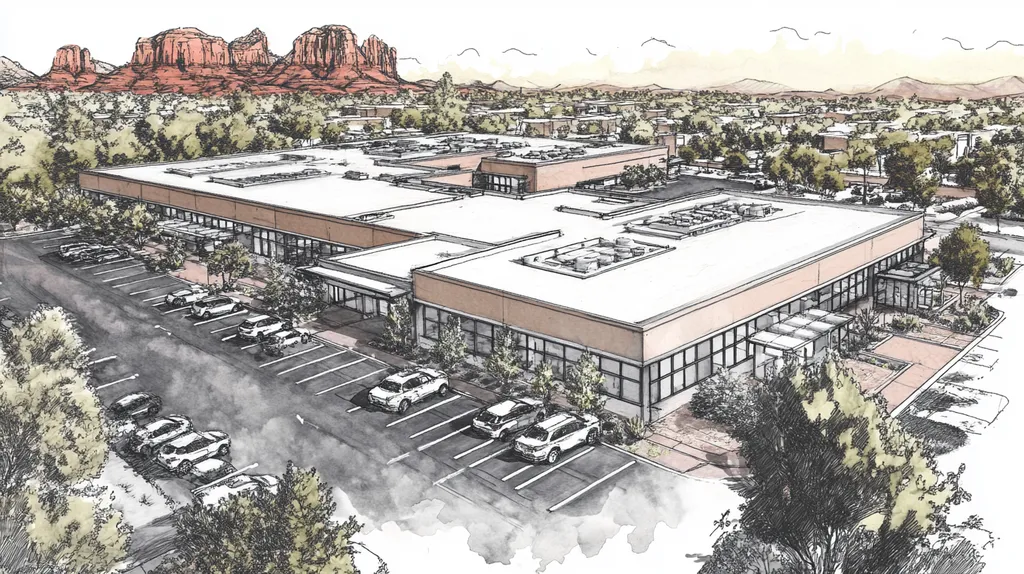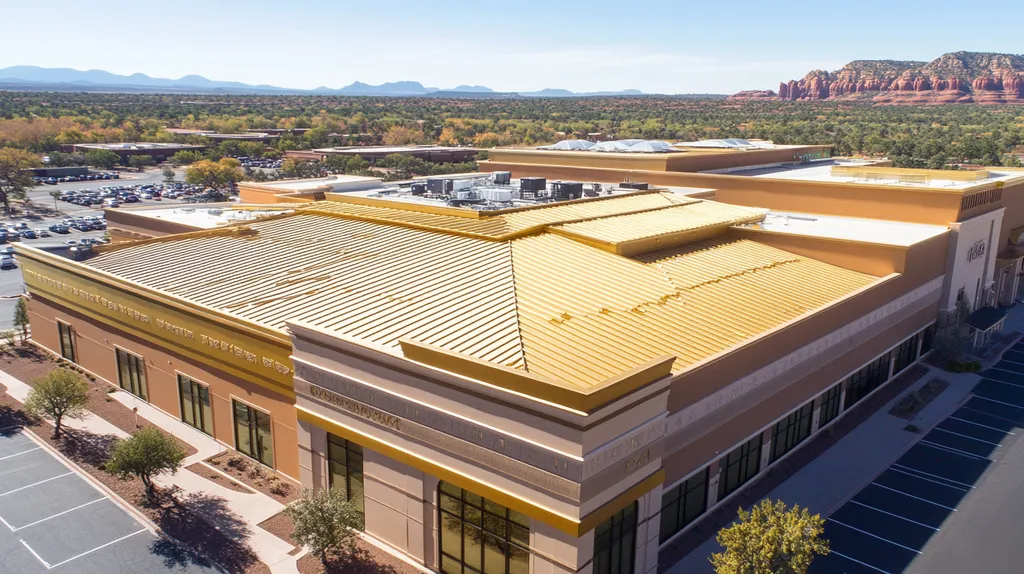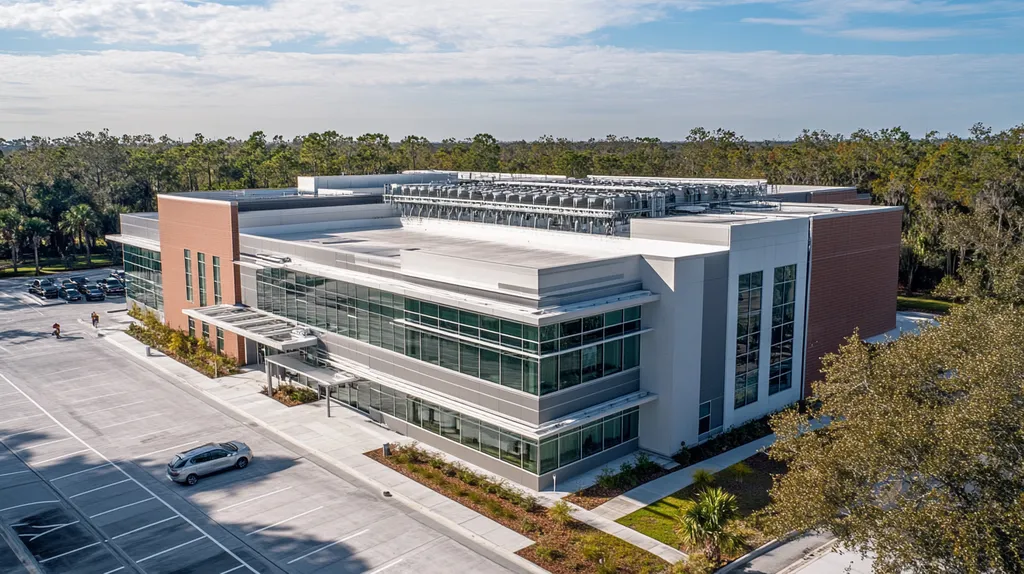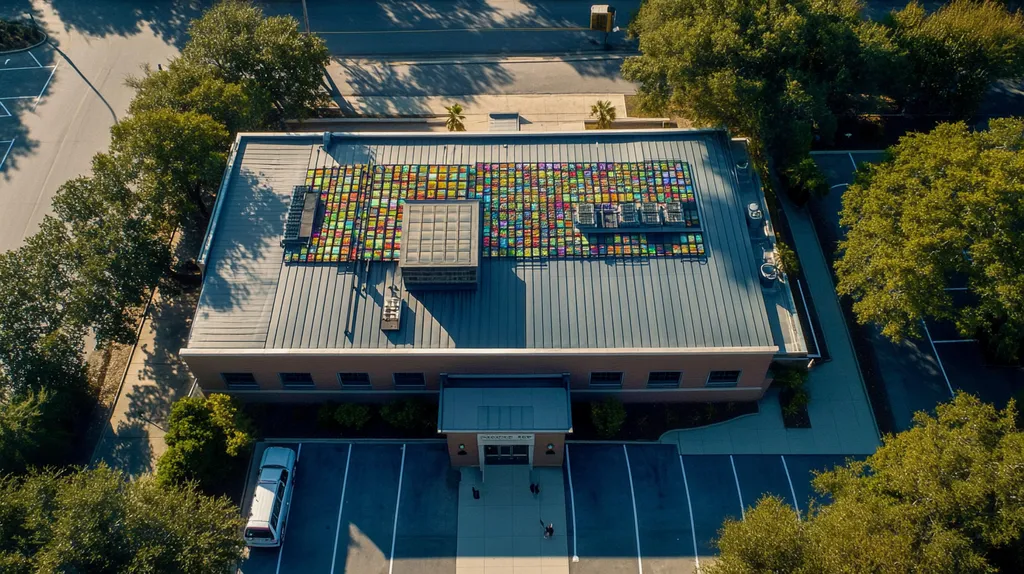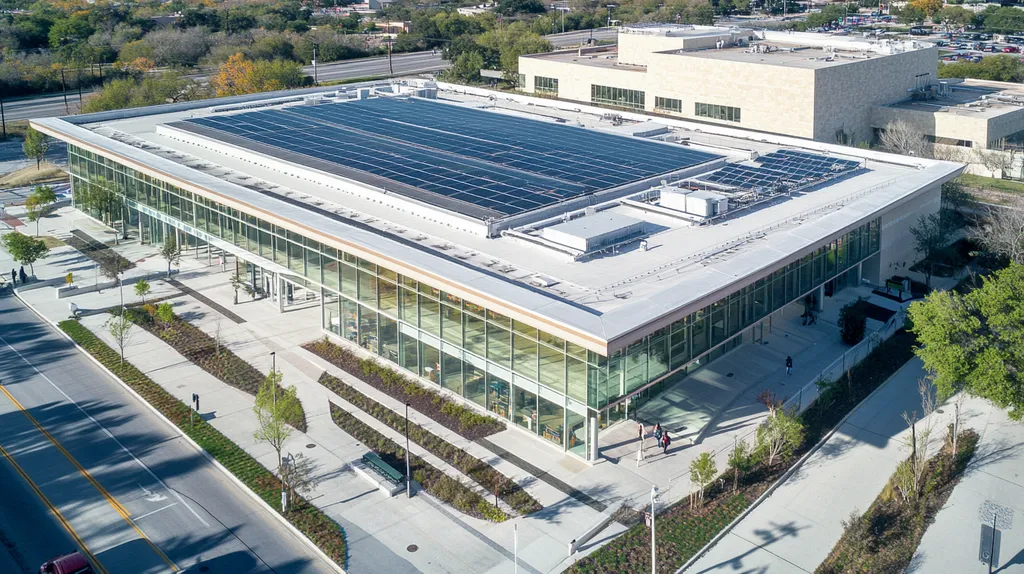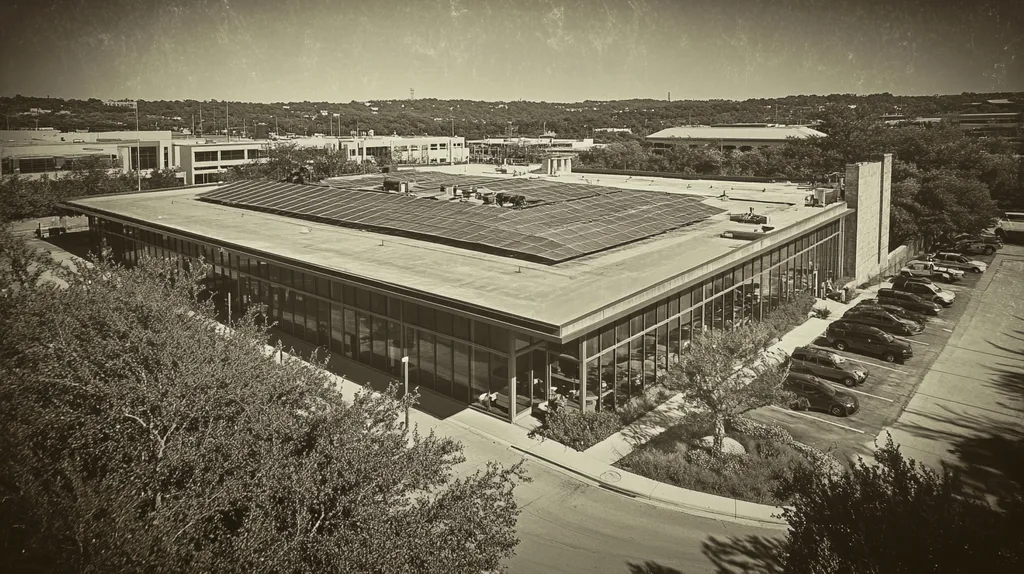Commercial property owners lose millions annually by overlooking one of the most effective roofing solutions available today. Recent studies show that 40% of premature roof failures could be prevented through proper protective coatings.
While silicone coatings have emerged as a leading solution for extending roof life and reducing energy costs, persistent misconceptions continue to drive poor decision-making among facility managers.
This comprehensive analysis examines the reality behind common silicone coating myths, explores their practical benefits, and provides evidence-based guidance for commercial roofing professionals seeking to maximize their return on investment.
SECTION 1: COMMON MISCONCEPTIONS
As property owners and facility managers navigate their roofing options, it’s vital to debunk the myths surrounding silicone coatings. Misconceptions can lead to poor decision-making, resulting in costly repairs and diminished roof performance. For example, a study from 2021 revealed that nearly 30% of facility managers thought silicone coatings were not worth the investment, missing out on their significant long-term advantages. This section will clarify three widespread misconceptions that could impede informed roofing choices.
Silicone Coatings are Too Expensive
A common belief is that silicone coatings are prohibitively expensive compared to traditional roofing materials. While upfront costs may seem higher, it’s essential to look beyond initial prices and consider the total cost of ownership. Silicone coatings can enhance the lifespan of a roof by an impressive 10 to 15 years, lessening the frequency of expensive replacements.
In addition, silicone coatings can lead to reduced energy expenses and lower maintenance needs. The Energy Star program points out that reflective coatings might decrease cooling costs by up to 20% by keeping rooftop temperatures cooler.
This long-term financial perspective challenges the assumption that silicone coatings are simply a premium option. Overlooking these advantages may result in frequent repairs, ultimately leading to higher expenses that counteract any short-term savings from cheaper alternatives.
Understanding the true value of silicone coatings is crucial for effective budget planning and securing the best protection for commercial properties.
Silicone Coatings Attract Too Much Dirt
Another misconception is that silicone coatings attract more dirt than traditional roofing materials. While any roof can gather debris, the reflective quality of silicone coatings often helps keep roofs cleaner. Their smooth surface inhibits the growth of moss and algae that can lead to dirt accumulation.
Research shows that commercial roofs with silicone coatings typically require less frequent cleaning than other roofing materials. A well-maintained silicone-coated roof retains its reflective properties longer, which contributes to increased energy efficiency.
Furthermore, periodic maintenance, such as simple washdowns, easily manages any dirt buildup without significant effort. Ignoring the simplicity of upkeep can lead property owners to shy away from silicone coatings, missing out on their long-term benefits.
Ultimately, the misconception about dirt accumulation can obscure the greater advantages, diverting focus from the energy savings and enhanced durability that silicone coatings offer.
Silicone Coatings are Not Durable
Lastly, there’s a belief that silicone coatings are less durable than other roofing systems. In reality, silicone coatings are known for their remarkable flexibility and their ability to withstand extreme weather conditions. They can resist high winds, heavy rain, and wide temperature fluctuations without succumbing to cracks or degradation.
These coatings are specially designed to fend off UV rays and minimize thermal cycling damage. This results in roof systems with a longer lifespan and lower repair frequency. Evidence shows that properly applied silicone coatings can significantly extend a roof’s life beyond that of conventional systems.
Many property owners overlook the durability advantages of silicone coatings, mistakenly viewing them as merely a short-term solution. This misunderstanding can lead to the selection of inferior alternatives that jeopardize roofing integrity and incur higher repair costs over time.
In summary, misconceptions surrounding the durability of silicone coatings detract from their well-documented performance, underscoring the need for enhanced education among stakeholders in commercial roofing.
SECTION 2: PRACTICAL IMPLICATIONS
Choosing silicone coatings for commercial roofs presents significant implications that should be thoughtfully assessed. With roofing costs consuming a large part of facility management budgets, property owners need solutions that not only enhance roof longevity but also improve energy efficiency. Recent findings suggest that roofs treated with silicone coatings can last up to 20 years longer than those made with traditional materials—potentially leading to savings of thousands in replacement costs. This section explores the practical benefits of silicone coatings, highlighting their influence on roof lifespan, energy efficiency, and safety.
Impact on Roof Lifespan and Maintenance
Silicone coatings significantly bolster the durability of commercial roofs, extending their service life while simplifying maintenance. Unlike traditional roofing systems, which often require frequent repairs, silicone coatings provide a seamless, waterproof barrier that minimizes leaks. This proactive approach helps prevent structural damage and the common interior issues associated with water infiltration.
Additionally, applying a silicone coating requires much less preparation than a complete roof replacement. Existing roofing materials can often be coated directly, reducing disruptions to business operations and lowering labor costs. This method allows property managers to channel budget resources toward other crucial areas while ensuring their roofs remain intact.
Regular maintenance is greatly eased with silicone coatings. Property owners can anticipate fewer inspections and repairs, saving valuable time and resources. Ultimately, this leads to a reduced total cost of ownership, making silicone coatings a savvy financial decision.
The reflective qualities of silicone coatings also serve to protect the underlying roof substrate, further extending its life span. This added durability gives property owners peace of mind regarding the viability of their roofing investments during long-term use.
Effects on Energy Efficiency and Costs
Energy efficiency is crucial for commercial properties, and silicone coatings play an integral role in achieving substantial energy savings. These coatings are designed to be highly reflective, bouncing back much of the solar radiation they encounter and effectively cooling the roof surface. A cooler roof significantly reduces the strain on air conditioning systems, translating into lower energy bills.
Buildings featuring silicone-coated roofs can see energy savings of up to 30%. This is particularly impactful during the sweltering summer months when cooling costs can skyrocket. Property managers will likely observe a noticeable dip in their utility expenses, directly benefiting their overall financial performance.
Moreover, utility companies often provide financial incentives for incorporating energy-efficient solutions, such as reflective roof coatings. This can offer immediate cost recovery while enhancing the overall return on investment for property owners.
It’s also important to recognize the positive environmental ramifications of these energy savings. By lessening energy consumption, companies contribute to lower greenhouse gas emissions, supporting the sustainability initiatives many organizations prioritize today.
Safety Concerns and Slip Resistance
Safety remains paramount in commercial roof management, and silicone coatings enhance slip resistance without sacrificing aesthetic appeal. As roofs age and accumulate debris, surfaces can become hazardous. Silicone coatings increase traction, significantly diminishing the risk of slips and falls for maintenance staff accessing the roof.
When properly applied, these coatings assure compliance with safety regulations, providing peace of mind for those needing to work on the roof. Enhancing safety can also lead to lower liability insurance premiums—an essential factor for property managers to consider.
Furthermore, silicone coatings foster a safer work environment during maintenance activities. A secure rooftop not only safeguards employees but also helps meet OSHA guidelines and other regulatory obligations.
Ultimately, silicone coatings offer more than just a visual upgrade; they deliver critical safety benefits that protect the individuals responsible for maintaining these essential structures. Choosing safety-first roofing solutions pays off long-term by reducing risks and improving operational efficiency.
SECTION 3: COST OF MISINFORMATION
Making informed roofing decisions is crucial, as the wrong choices can lead to substantial financial setbacks. Misinformation about silicone coatings can result in significant repair costs and premature roof replacements. As many commercial properties operate under tight budgets, recognizing the actual implications of roofing material decisions is essential. This section delves into the financial repercussions of misguided choices, the opportunity costs of neglecting silicone coatings, and the long-term economic benefits that may be overlooked.
Financial Consequences of Misguided Choices
Selecting subpar roofing options can result in severe financial repercussions for property owners. While traditional materials like asphalt may appear more budget-friendly at first glance, they often demand frequent repairs and may need full replacement within a decade.
In comparison, silicone coatings offer lasting protection and durability. They can greatly extend the roof’s lifespan, translating into lower long-term expenses. Investing in silicone applications can save property owners from the headaches associated with leaks and structural damage.
The costs of repairing water damage or mold due to inefficient roofing often dwarf any short-term savings gained from opting for cheaper materials. Many property owners are caught off guard by these financial burdens linked to neglect.
Overall, being uninformed about the benefits of silicone coatings can lead to choices that negatively impact financial health.
Opportunity Costs of Ignoring Silicone Coatings
Property owners who dismiss silicone coatings are also facing substantial opportunity costs. Clinging to outdated roofing technologies prevents them from capitalizing on innovations that boost energy efficiency and provide environmental benefits. The reflective nature of silicone coatings can significantly lower energy expenses.
For instance, a silicone-coated roof can lessen energy use by up to 30% during peak summer months. This leads to reduced utility bills and a quicker return on investment.
Moreover, roofs treated with silicone may qualify for tax incentives or deductions related to energy efficiency, translating to financial gains that enhance overall property value.
By ignoring silicone options, property owners risk falling short of sustainability measures that are increasingly appealing to tenants and future buyers.
Long-Term Economic Benefits Missed
Ultimately, overlooking silicone coatings means missing out on long-term economic advantages that can impact a property’s overall value. With a lifespan of over 20 years, silicone coatings significantly reduce the risk of costly repairs and replacements.
This durability allows property owners to save on capital expenditures, providing the flexibility to allocate funds to other important areas. By choosing silicone coatings, property owners are investing in their property’s long-term financial health.
Additionally, many manufacturers offer warranties on silicone coatings, enhancing the owner’s investment protection. This added security ensures that expenditures are safeguarded against unforeseen challenges.
Ultimately, the economic advantages of incorporating silicone coatings are evident. Property owners who prioritize informed roofing decisions will see the benefits in their long-term financial sustainability.
SECTION 4: REALITY CHECK
When choosing roofing solutions, the stakes are high—especially when it comes to enduring harsh weather conditions that can drastically affect longevity and costs. As silicone coatings gain traction in the commercial roofing sector, their real-world performance in extreme environments is essential to examine. Concerns surrounding UV protection and environmental safety are also critical in determining the reliability of roof systems. This section will address these pivotal topics, offering clarity and assurance to property owners and facility managers.
Actual Performance in Harsh Weather
Harsh weather presents a formidable challenge to roofing systems, making it crucial to understand a product’s true performance under such conditions. Silicone coatings shine in their ability to resist ponding water, unlike many traditional roofing materials that can buckle and deteriorate when faced with similar challenges. During heavy rainfall, structures with silicone coatings show a marked reduction in the risk of leaks and condensation issues.
Moreover, silicone coatings are engineered to handle temperature swings, exhibiting remarkable flexibility in extreme heat and cold. This flexibility helps prevent cracking and extends the lifespan of roofs. When it comes to hail, silicone coatings often outperform other materials by delivering superior impact resistance.
Additionally, UV rays can quickly degrade roofing materials over time. High-quality silicone coatings are specifically designed to reflect UV radiation, which not only minimizes heat absorption but also reduces wear on the underlying roof components.
For facilities situated in areas with severe weather, it’s critical to select silicone products that are tested and certified for extreme climates. Neglecting this step could lead to premature roofing failures and escalating maintenance costs.
UV Protection and Cooling Cost Savings
Effective UV protection is essential for extending the lifespan of roofing systems, and silicone coatings excel in this area. By effectively blocking UV radiation, these coatings help preserve the integrity of roofing materials over time.
In addition to their durability, the reflective characteristics of silicone coatings contribute to significant cooling cost savings. A cooler roof means reduced energy consumption during warmer months, minimizing reliance on air conditioning. This shift can lead to decreased electric bills, benefiting overall facility budgets.
In fact, studies reveal that buildings with silicone-coated roofs can experience energy savings of up to 20%. Such reductions in cooling costs can ultimately offset the initial investment required for silicone applications, offering a dual advantage of enhanced roof quality and lower operational expenses.
Moreover, it’s vital to consider local climates when selecting a roofing solution. For buildings positioned in sunny regions, the energy savings and cooling benefits provided by silicone coatings can be especially pronounced.
Environmental Safety and Compliance
The environmental impact of roofing materials has grown increasingly important in modern commercial practices. Silicone coatings distinguish themselves as a safer choice due to their low VOC (volatile organic compound) content, making them compliant with strict air quality standards in many areas.
By opting for silicone, property owners not only enhance indoor air quality but also help reduce harmful emissions. Furthermore, many silicone coatings are water-based, amplifying their eco-friendliness and ease of application.
Compliance with environmental regulations is particularly crucial for facilities seeking green certifications. The sustainability aspects of silicone roofing can elevate a company’s commitment to eco-conscious practices, enhancing public perception and marketability.
In summary, silicone coatings present an environmentally responsible roofing option that meets or exceeds safety standards. This compliance reassures property owners that their investments are sound, promoting both roof performance and a reduced ecological footprint.
SECTION 5: EVIDENCE-BASED ALTERNATIVES
When it comes to making smart roofing decisions, exploring all available options is vital. Property owners and facility managers must find solutions that not only promise quality but also provide lasting value. While silicone coatings are renowned for their protective capabilities, alternatives like acrylic and polyurethane coatings offer distinct advantages that might cater better to specific needs. This section will assess these alternatives, share successful case studies, and highlight warranties that underscore their effectiveness.
Comparing Silicone to Other Roof Coatings
While silicone coatings are favored in the industry, they are not the only viable option. Acrylic coatings, for instance, often excel in UV resistance and reflectivity, significantly lowering energy costs in sun-drenched regions.
On the other hand, polyurethane coatings are celebrated for their outstanding durability and tear resistance. These coatings can endure heavy foot traffic and extreme weather conditions, making them ideal for roofs that face high wear and tear.
Recognizing these differences is essential for property owners, as each type of coating delivers unique benefits tailored to specific roofing requirements and environmental impacts.
By thoroughly assessing a roofing project’s specific needs, stakeholders can ensure optimal performance and cost-effectiveness, emphasizing the importance of informed decision-making.
Case Studies of Successful Silicone Applications
Real-world applications offer valuable insights into the effectiveness of silicone coatings. A prominent example involves a large retail outlet grappling with persistent leaks and spiraling maintenance expenses. After applying a silicone coating, the facility achieved waterproofing and notably reduced energy costs thanks to increased reflectivity.
In another case, a manufacturing plant adopted a silicone system to enhance the longevity of its aging roof. The result was a seamless finish that secured a 10-year warranty extension for the roof system, highlighting the long-term benefits of this solution.
These case studies illustrate the advantages of applying silicone coatings under the appropriate circumstances. They serve to emphasize the need for property owners to consider environmental factors and specific usage when selecting a coating.
Each successful application underscores that informed choices can lead to substantial benefits and improved roof performance for commercial properties.
Manufacturer Warranties and Guarantees
When deciding on roofing systems, manufacturer warranties play a crucial role. Many silicone coating manufacturers provide robust warranties that can extend up to 30 years, demonstrating their confidence in product durability and efficacy.
Other coating types also come with warranties, although they frequently feature variations in coverage and duration. For example, acrylic coatings may offer shorter warranty periods, providing less assurance for property owners seeking long-term protection.
Grasping these warranty details is essential, as they offer peace of mind and financial security, ensuring investments are safeguarded against unforeseen issues.
Ultimately, choosing the right coating with a solid warranty can greatly influence a facility’s operational and financial well-being throughout its lifespan.
SECTION 6: TEST AND VERIFY
To fully harness the advantages of silicone coatings on commercial roofs, rigorous testing and maintenance are essential. Research shows that over 30% of roof failures come from inadequate testing and upkeep. Property owners and facility managers must be proactive in understanding how to test durability, perform regular maintenance, and confirm energy savings to avoid costly issues. This section highlights critical practices for ensuring that silicone coatings deliver on their promises.
Methods for Testing Silicone Coating Durability
Assessing the durability of silicone coatings is crucial to guarantee long-lasting performance. Penetration and adhesion tests evaluate how well the coatings bond to the underlying material. Strong adhesion is essential for withstanding adverse weather conditions, making these tests vital to reducing the risk of premature coating failures.
Additionally, UV resistance tests reveal how well a coating can endure sun exposure over time. A high-quality silicone coating should maintain its structural integrity under harsh sunlight for years. Regular testing can help identify areas that require immediate attention.
Water resistance tests are equally important, as they can pinpoint potential leaks before they escalate into serious issues. Without these assessments, roofs may remain at risk for moisture damage, compromising structural integrity. A robust testing strategy effectively distinguishes reliable products from inferior alternatives.
Finally, periodic inspections should accompany these tests to ensure that any deterioration is promptly identified and addressed, resulting in a more resilient roofing system.
Regular Maintenance Requirements and Tips
To maximize the performance of silicone coatings, regular maintenance is essential. Conducting routine inspections enables facility managers to spot problems early, greatly reducing the chances of substantial roof damage. Experts recommend inspecting roofs at least twice a year and after severe weather events.
Cleaning the roof surface regularly is also critical. Accumulated debris can obstruct drainage and lead to unwanted moisture buildup, ultimately shortening the lifespan of the coating. Ensuring a clean roof surface helps the coating function optimally.
Addressing minor issues—such as small cracks or punctures—immediately can prevent them from becoming more significant problems. Sealing seams and joints every few years also helps prolong the coating’s effectiveness.
Documenting all maintenance activities is beneficial. This not only aids in managing warranties but also helps establish a routine that enhances roof longevity.
Verifying Energy Efficiency and Cost Savings
After applying silicone coatings, verifying their energy efficiency is crucial for understanding their economic impact. Property managers can conduct thermographic inspections to identify areas of heat retention and loss, which shows how effectively the roof reflects heat and reduces air conditioning costs.
Comparing energy bills before and after the application can also reveal significant savings. A noticeable drop in energy expenses typically indicates that the coating is performing as expected.
Moreover, facilities that achieve energy efficiency certifications can bolster their credibility and property value. Such certifications add an appealing aspect for future tenants or buyers.
Lastly, engaging third-party evaluators can provide unbiased assessments of energy efficiency improvements. This step validates savings claims and helps stakeholders grasp the financial implications of their roofing choices.
The Bottom Line
With commercial roof failures costing businesses over $2.5 billion annually, facility managers cannot afford to dismiss proven protective solutions like silicone coatings.
The evidence clearly demonstrates that silicone coatings deliver superior weather resistance, reduced energy costs, and extended roof life when properly tested and maintained.
While misconceptions about expense and durability persist, case studies consistently show these coatings providing ROI through decreased maintenance needs and energy savings of up to 30%.
As environmental regulations tighten and energy costs rise, silicone coatings represent a forward-thinking solution that protects both facilities and bottom lines.
The choice is clear: embrace proven silicone coating technology or risk costly repairs, premature replacements, and missed opportunities for substantial operational savings.
FREQUENTLY ASKED QUESTIONS
Q. Are silicone coatings for commercial roofs too expensive?
A. While the upfront costs may seem higher, consider the total cost of ownership. Silicone coatings can extend roof life by 10 to 15 years, potentially saving on frequent repairs and replacements.
Q. How do silicone coatings affect the lifespan of an industrial roof?
A. Silicone coatings enhance the durability of roofs, often extending their lifespan significantly. They provide a seamless, waterproof barrier, reducing the need for consistent repairs and contributing to long-term cost savings.
Q. What are the financial consequences of misinformation about commercial roofing?
A. Opting for less durable roofing options can lead to costly repairs and premature replacements. Misleading choices often result in higher long-term expenses, overshadowing any initial savings from cheaper materials.
Q. How do silicone coatings perform in harsh weather conditions for commercial roofs?
A. Silicone coatings are flexible and resist ponding water, extending a roof’s lifespan. They excel under extreme temperatures and offer strong UV protection, reducing the risk of leaks during severe weather.
Q. What alternatives to silicone coatings should commercial property owners consider?
A. Acrylic and polyurethane coatings are viable options, offering different benefits like UV resistance and tear strength. Understanding each type’s advantages allows for tailored roofing solutions based on specific needs.
Q. What testing methods should be used to ensure silicone coating durability?
A. Essential tests include adhesion, UV resistance, and water resistance assessments. Regular inspections paired with these tests help identify potential issues, ensuring the coating’s long-term performance and reliability.
Q. How can facility managers verify energy efficiency after applying silicone coatings?
A. Conduct thermographic inspections to assess heat retention and loss. Comparing energy bills before and after application can help confirm savings, ensuring the coating performs as expected.

